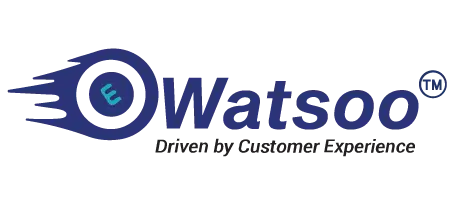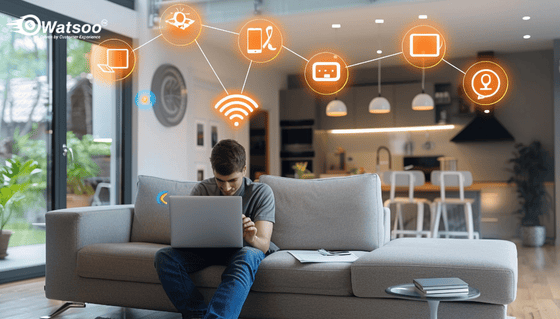You will learn about various uses of IoT. Many commercials and industries will integrate this technique by 2025. IoT involves the exchange of information between devices or systems via the Internet. Many devices offer advanced solutions to users, thanks to IoT. IoT is not limited to professional uses. You can control smart devices in IoT-enabled environments (Smart Homes). Let us know about the prominent uses of IoT.
Uses of IoT Technology
IoT, popularly known as the Internet of Things, is a technology that connects systems and devices. It empowers them to exchange information and enables automation across various departments. Businesses leveraged IoT to enhance efficiency, make data-driven decisions, and automate routine tasks.
IoT is integrated in healthcare to enable remote patient health monitoring and asset tracing. You can observe this technology’s use in logistics for vehicle tracking and predictive maintenance. IoT primarily reduces operational expenses, simplifies processes, and upgrades service delivery across industries. This blog chiefly covers the following uses of IoT:
- Home Automation Using IoT
- Smart Irrigation System Using IoT
- Smart Parking System Using IoT
- Smart Agriculture System Using IoT
- Health Monitoring System Using IoT
- Smart Waste Management System Using IoT
- Weather Monitoring System Using IoT
- Fleet Management System Using IoT
Let us learn about all of them in detail further with popular examples.
Home Automation Using IoT
IoT-enabled domestic automation involves integrating commonly used devices with the Internet of Things. Gadgets may be equipped with lights, security cameras, indoor regulators, and machines connected to a centralized framework. Domestic owners can remotely control lighting, screen security, and alter indoor climate settings using smart portable applications.
In Home automation using IoT, users can design advanced gadgets to work according to their inclination, receive real-time alerts, automate schedules, and receive progress updates with comfort. Vitality preservation is critical as the gadgets and frameworks consequently optimize their control utilization. Advanced security highlights offer a sense of calmness through remote observation and prompt cautions or notices.
Smart Irrigation System Using IoT
Smart water systems use IoT sensors and gadgets to monitor soil moisture, stickiness, and climate conditions in real-time. They transfer data to the centralized platform, where the advanced algorithms present optimal watering schedules.
The modern smart irrigation system using IoT automatically manages irrigation based on environmental aspects and ensures that plants get the accurate amount whenever needed. Coordinating climate data and other gadgets enhances rural administration productivity and sustainability.
Smart Parking System Using IoT
IoT-based smart stopping frameworks utilize sensors, gadgets, or systems to observe and control space utilization and vehicle presence in real-time. The centralized system processes and analyzes data gathered from sensors or devices, transferring it to the system, which then determines availability, vehicle type, and occupancy duration. Using this smart technology, the drivers can get real-time parking updates via smartphone applications.
Smart parking system using IoT reduces parking space search time and vehicle blockage. Space use optimization, improved client satisfaction, and minimized operational expenses can benefit parking facility managers. These advanced systems are adaptable, scalable, and vital for modern urban architecture.
Smart Agriculture System Using IoT
Agriculturists utilize IoT to coordinate sensors and associated gadget arrangements on farms, fields, and ranches. These gadgets and frameworks collect information and data on soil temperature, stickiness, dampness, and soil health. Analyzing this information empowers you to supply significant experiences, enabling timely pest control, precise water systems, and fertilization.
Farmers and workers can monitor and manage operations remotely for improved sustainability and productivity. In a Smart agriculture system using IoT, the system provides data-oriented recommendations and automated notifications to address issues proactively. This ensures optimal crop yield and resource utilization. Farmers in 2025 opt for IoT-enabled smart agriculture, which allows sustainable farming and provides food security.
Health Monitoring System Using IoT
Healthcare is a rapidly growing sector with numerous uses of IoT. Wearable IoT devices track the user’s vital signs using RPM (Remote Patient Monitoring). It may include oxygen saturation, heart rate, or BP (Blood Pressure). Advanced IoT analytics and artificial intelligence process this information for predictive solutions for potential health issues early, enabling immediate actions.
The health monitoring system using IoT allows patients to manage chronic diseases and access care more easily, particularly in remote areas. IoT supports hospital asset tracing, enhanced patient safety protocols, and medication management, making healthcare services more personalized and efficient.
Smart Waste Management System Using IoT
In the smart waste management system using IoT, IoT sensors in garbage collection vehicles and dustbins monitor waste levels to optimize collection routes/paths. This diminishes the natural garbage contamination, overflow, and operational costs.
Instant information availability underpins the municipality’s arrangements for smooth waste collection plans, urban maintainability, and cleanliness. The Internet of Things Integration with waste management supports recycling management activities by following the recyclable materials. It encourages responsible disposal practices.
Weather Monitoring System Using IoT
In a weather monitoring system using IoT, Distributed sensors gather information on temperature, wind speed, humidity, and precipitation using IoT-enabled weather observing systems. This data is vital for agriculture, urban planning, and large-scale disaster management.
Immediate weather data or updates enable farmers to manage irrigation and secure the crops from unfavourable conditions. Smart cities use this information to prepare for extreme weather conditions/events, improving public safety simultaneously. AI enhances weather forecasting with precise and timely notifications through IoT integration.
Fleet Management System Using IoT
In transportation and businesses that require coordination, IoT profoundly benefits fleet management by offering accurate vehicle tracking, driver behavior analysis, and progressive features such as route optimization or geofencing. The uses of IoT in telematics gadgets collect data on fuel utilization, vehicle maintenance, location, and speed.
You can connect with Watsoo, a leading company in India, specialized in innovative IoT, AI/ML, and Telematics solutions. You can enjoy advanced dashboards, smart sensors, and modern applications in your business. Improve productivity, sustainability, and strength by integrating IoT-enabled smart services.
The fleet management system using IoT gathers information to enhance operational efficiency, security, driver safety, and reduce expenses. Fleet administrators can maintain a strategic distance from traffic, plan predictive support, and monitor driver exhaustion. This system will enable you to avoid vehicle breakdowns, make convenient deliveries, and improve client fulfillment rates.
Conclusion
The uses of IoT in 2025 are bringing transformative changes in both personal and professional domains. You can go through the blog and learn – What are the Different Professional and Personal Uses of IoT in 2025?
IoT technology is beneficial for smart homes, agriculture, healthcare, and urban areas, as it provides smarter, efficient, and sustainable solutions. AI, progressive analytics, cloud computing, and MI integration with IoT gadgets quicken creativity. IoT makes it simple to trade information among gadgets and frameworks utilizing the Web, making it a crucial innovation for the future. In different Uses of IoT, the sectors are seeing advancements improve, with their approach expanding across sectors, leading to improved networks and intellectual arrangements.
FAQs
Q. What is the IoT and why is it useful?
- IoT, or Internet of Things, is a network of associated devices that exchange information and communicate with each other and the cloud. It is highly beneficial as it enables automation, provides real-time insights, and promotes smarter living. This technology uses smart devices that connect to enhance workflow efficiency and optimize regular processes.
Q. What are the uses of IoT?
- Sectors such as logistics, transportation, industrial automation, healthcare, agriculture, and environmental monitoring & management use IoT. Smart homes, connected vehicles, wearable health monitors, smart agriculture, and automated factories integrate advanced devices, sensors, applications, and dashboards. The best example is environmental sensors that monitor air and water quality.
Q. Where is IoT mostly used?
- Manufacturers, transporters, farmers, and smart city houses primarily use IoT for remote management and storage control. Industrial IoT is prevalent in logistics and warehouses. Consumers use IoT in smart homes, wearable devices, and smart appliances.
Q. What are the benefits of IoT?
- There are numerous benefits and uses of IoT, including information collection upgrade, improved automation, expense control, optimized supply chains, and work efficiency. It enables predictive maintenance for businesses with accurate monitoring that simultaneously leads to higher client satisfaction. It is beneficial for both the providers
(Businesses) and service takers (Consumers).
Q. How are IoT devices used?
- IoT devices are used to gather data via sensors, actuators, and other smart equipment. The IoT-enabled devices communicate with each other and automate the regular tasks for professional and personal use. A prominent example is the remote adjustment of home temperature and lighting, warehouse inventory tracking, patient health monitoring, and irrigation automation in agriculture.
Q. What are 5 IoT devices?
- There are numerous prominent uses of IoT and IoT devices, and the technical hardware is integrated into different places for actionable data and information collection. Devices such as actuators, appliances, and sensors that can connect both wirelessly and via wire to exchange data on the internet. The 5 common IoT device uses are security cameras, smartwatches, modern thermostats, vehicle tracking, and smart TVs.


